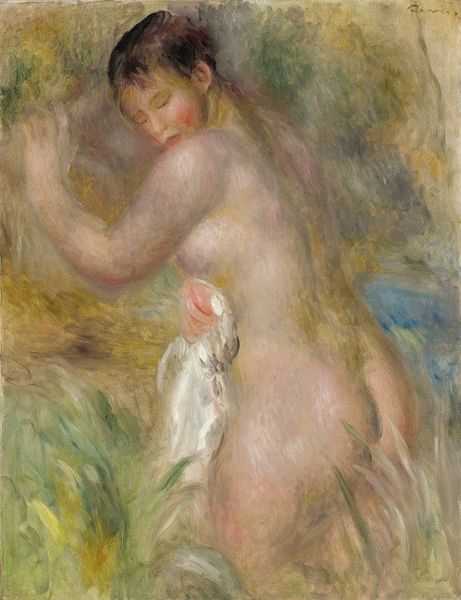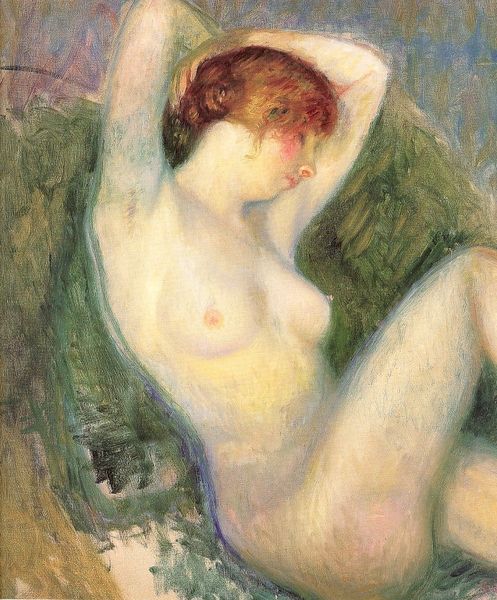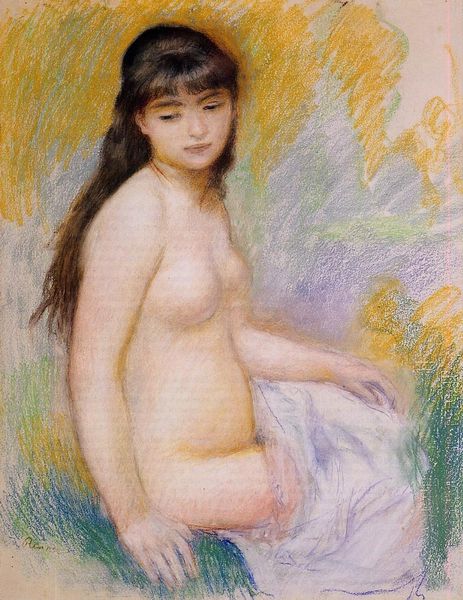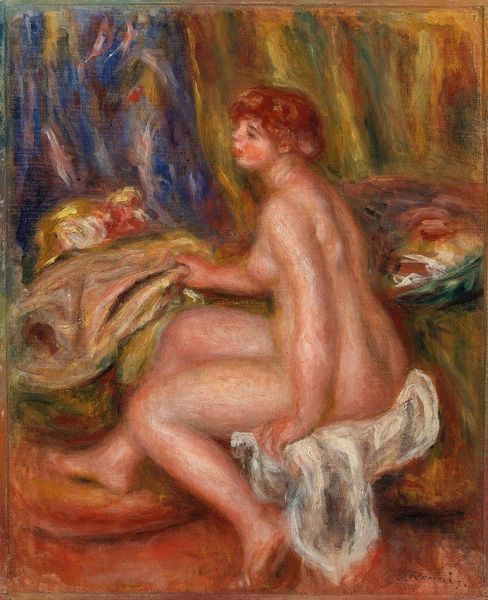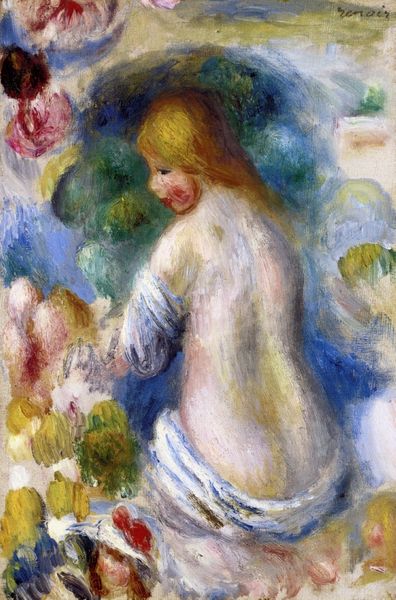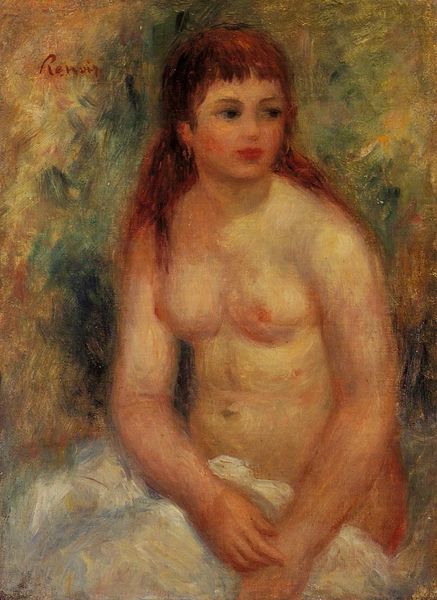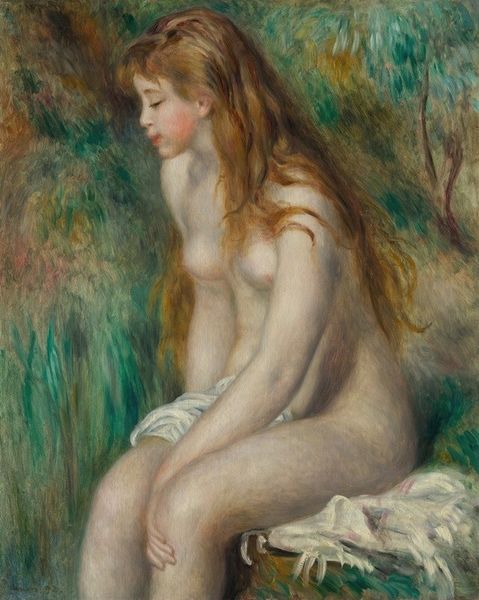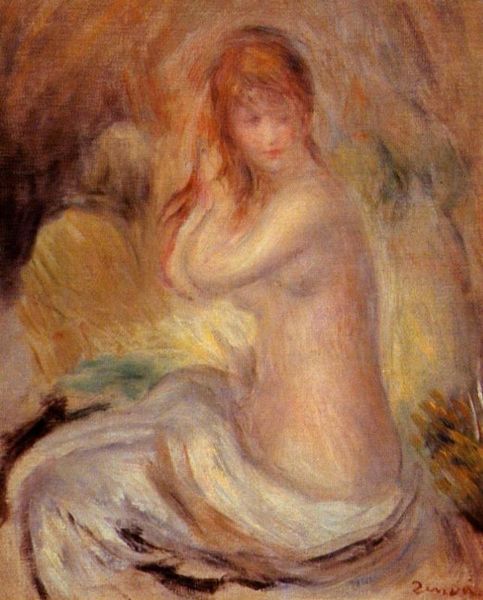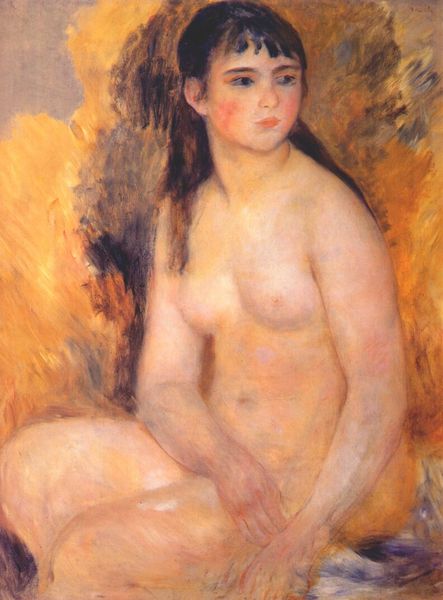
Copyright: Public Domain: Artvee
Curator: Renoir’s “Nu Assis,” created circa 1890 to 1894, immediately strikes me with its intimacy. There’s something vulnerable and subtly powerful about the sitter’s downcast gaze. Editor: It’s remarkably soft, almost as if seen through a heat haze. The impasto technique adds to that impression. Beyond the surface appearance of a nude, what readings might its symbolism offer? Curator: Well, in art history, seated nudes often symbolize contemplation, vulnerability, or even captivity, depending on context. But with Renoir, especially during this period, he often evokes the continuity between classical forms and modern life. The setting isn’t grand; it’s domestic, personal, even private. The image of the goddess becomes more...earthly, perhaps? Editor: It seems we are dealing more with an idealized everywoman than any mythological figure. Could it also represent a shift away from academic ideals of beauty toward a more romantic and immediate appreciation for the human form? What I mean, it's not neoclassical in subject but I perceive in it echoes of Ingres! Curator: Interesting observation about romanticism and immediacy, although I tend to believe it's more aligned with impressionistic freedom. It isn't about precise draftsmanship but a feeling that transcends visual literalism. This approach is radical because, instead of adhering to conventional, historical iconography, Renoir elevates the act of perceiving itself to a sacred, sensual, symbolic event. Editor: Indeed, by democratizing form he subverts traditional notions of “ideal” beauty established in academies. What message about bodily acceptance, individuality, or agency might this challenge propose to late nineteenth-century audiences accustomed to the hypersexualized female nude in the visual lexicon? Curator: On a personal note, its enduring symbolic impact has always stemmed from its power to subvert patriarchal dominance in art with feminine sensuality. Editor: That's fascinating. I leave seeing that shift more distinctly. Curator: It’s about how a single symbol contains multitudes, continually reimagined over time.
Comments
No comments
Be the first to comment and join the conversation on the ultimate creative platform.
